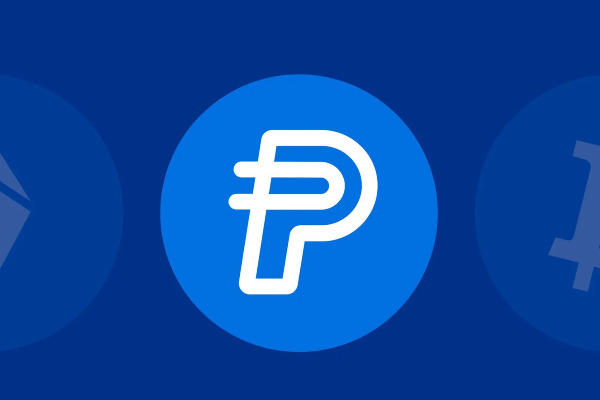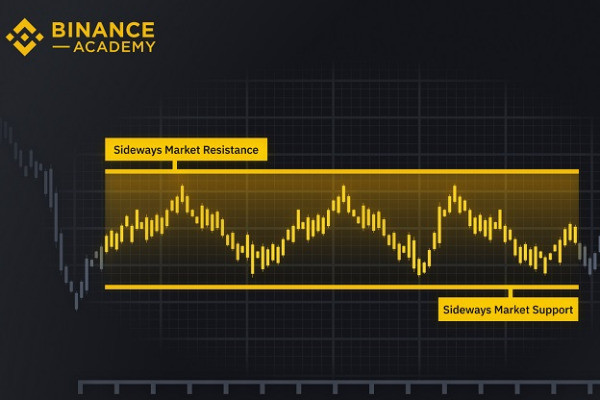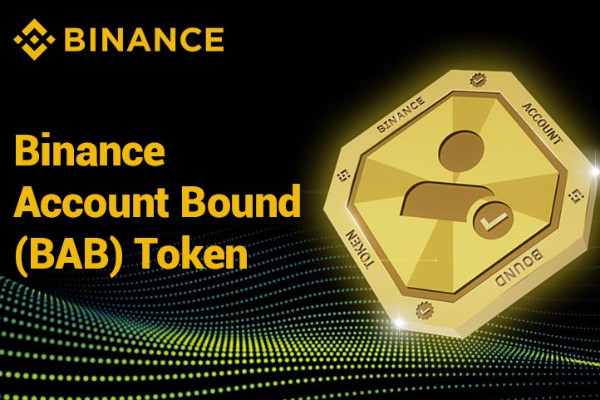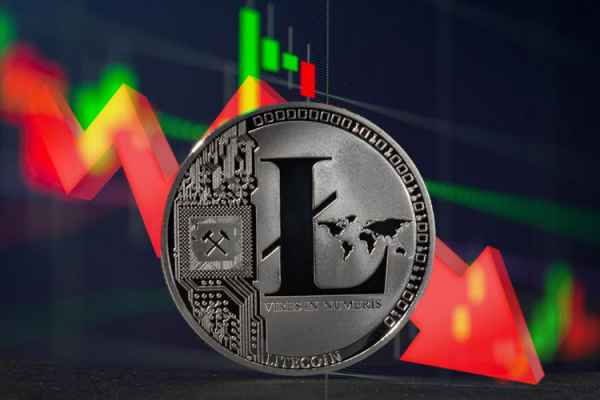Following the FTX collapse, Proof of Reserves has become a trend among centralized crypto exchanges. How so? What is the mechanism behind it?
Crypto holders can store and safeguard their crypto assets through several methods, such as self-custody, exchange wallets, or third-party custodians. Just like in traditional financial markets, the custodian's primary duty is to protect customer funds by holding the private key on behalf of the asset's holder, preventing any other party to access them.
Most crypto exchanges used to be quite secretive when it comes to their holdings, blockchain addresses, and wallet management system that control the client funds. However, things are starting to change in the aftermath of the FTX fallout back in November 2022.
One of the most popular solutions to the issue is called Proof of Reserves, which aims to provide transparency to users in the absence of universal regulations in the crypto industry. Some well-known crypto exchanges have conducted the practice, and some others are planning to do so.

In this article, we'll discuss everything you need to know about Proof of Reserves, why it is important for crypto exchanges, and some remaining concerns in the industry.
Contents
What Happened to FTX?
FTX used to be a popular crypto exchange run by its CEO and founder, Sam Bankman-Fried. In November 2022, the exchange announced on Twitter that it has filed for bankruptcy, along with its sister trading firm called Alameda Research, its American subsidiary FTX.US, and about 130 other affiliated entities. The announcement also stated that the firm's CEO has stepped down and to be replaced by a new CEO, John J. Ray III, who would handle the company during the proceedings.
The FTX collapse started when Binance sold its entire FTT holdings (FTX's native exchange token). Binance CEO, Changpeng Zhao, said that the decision is simply a part of the company's risk management, following the downfall of the price of Terra Luna earlier that year. On the following day, FTX was experiencing a liquidity crisis, which forces them to seek bailouts from venture capitalists and Binance. As the price free fell, many investors began asking for a total withdrawal of $6 billion in the days following the announcement.
On November 8, Binance announced that it had reached an agreement to acquire the non-US business of FTX for an undisclosed price, but the giant crypto firm decided to cancel the deal a day later due to the raised concerns about the misuse of client funds, among other issues. On November 10, the Bahamas regulator froze the assets of FTX. Bankman-Fried then apologized on Twitter, stating that FTX had sufficient funds to meet customer demands and that the "poor internal labeling" has caused the company to miscalculate leverage and liquidity.
A few days later, a class-action lawsuit was filed in the Florida Federal Court, alleging that Bankman-Fried has plotted a fraudulent crypto scheme to take advantage of unlucky investors from the US. As a result, the SCB of the Bahamas then took control of the crypto assets previously held by FTX and instructed Bankman-Fried to immediately move the funds to the regulator's wallet to protect the customers.
While the FTX collapse has come to an end, the crypto community is still highly aware and anxious that such an issue might repeat in the future. Thus, centralized exchanges (CEXs) need to find an effective solution to regain users' trust. This is where Proof of Reserves comes into play.
Understanding Proof of Reserves
In traditional finance, reserves are essentially a company's profits stored safely to utilize in unpredictable circumstances. Meanwhile, Proof of Reserves in the crypto space refers to an independent audit conducted by a third party to confirm that the entity or custodian has sufficient reserves to support all of its clients' deposits.
To put it simply, crypto exchanges will ask a third-party organization to conduct the attestation. The auditor will then publish the results in a snapshot that shows whether the firm really owns enough funds to match customer balances. The main goal is to assure customers that the company is not at risk of a liquidity crisis and that customers can choose to withdraw their funds at any time.
One of the popular methods is to use a Merkle Tree to integrate a large amount of data into a single hash and verify the integrity of the data set. First of all, the Merkle Tree system requires the auditor to make a snapshot of the balances of the company. The custodial data is arranged in a single data tree with branches of partition. Each "leaf" or node is labeled with a data block's cryptographic hash, which is used to verify data that has been sent, stored, or handled between computers.
The next step is the identification of the data pieces with hash codes. The auditor should obtain the Merkle root, which points to a single connection among the entire data in the tree. The root allows you to recognize the individual account responsible for depositing the asset with the assistance of unique digital signatures.
In the next step, the auditor must match the digital signatures with the Merkle tree records. This involves checking whether the balances of the individual are equal to the balances represented in the Merkle tree. Note that the Merkle tree is able to detect individual balances through drastic changes in the data structure. Thus, the company is unable to modify the balances without being detected by the system.
Proof of Reserves Vs Exchange Balances
Both Proof of Reserves and Exchange Balance aim to show the balances of coins and assets held in a platform's custody, but there are several notable differences that you need to know.
To begin with, it is important to understand that the way exchanges operate on-chain is highly complex, involving various dynamic practices and management systems that are unique for each exchange. These dynamics are essentially the basis of the data acquisition system of the Exchange Balance metrics. It uses a combination of public data, clustering algorithms, and exchange-specific heuristics.
Meanwhile, Proof of Reserves metrics only utilizes a (small) set of data that are publicly disclosed by the exchange. The set of data is static unless the exchange decides to update the list and add new addresses. In other words, the metric is simply the sum of assets held in addresses officially undisclosed by the respective exchange.
If we compare the two, the Exchange Balance metrics are more likely to produce dynamic results as they represent a more comprehensive set of addresses, while Proof of Reserves only uses a small set of addresses provided by the exchange. Depending on how transparent the exchange is, the total balance of the two metrics can be very close to each other.
The Importance of Proof of Reserve
The FTX collapse was mainly caused by a lack of liquidity and the misuse of client funds in the custody of the exchange, followed by a huge amount of withdrawals in the span of only a few days. It reveals the company's murky financial management, poor corporate controls, and a large absence of reliable financial information.
The problem is that the FTX collapse has led to a ripple effect on other centralized exchanges in the industry, in which the demand for better transparency surged significantly. Many exchanges then figured that Proof of Reserves can be a suitable solution to the issue, providing a reliable verification of asset custody. It can help them regain their customers' trust and promote their transparent ecosystem to the public.
On the other hand, it also helps customers to understand their exchange better as it contains the necessary data about the custody of customer assets.
So far, Proof of Reserves has been carried out by a number of popular exchanges like Kraken, Bitmex, Coinfloor, Gate.io, Binance, Luno, and Crypto.com.
Limitations and Liability Concerns
While Proof of Reserves is deemed necessary and seen as a positive step toward a more transparent crypto space, it is certainly not without flaws. In some cases, the existence of Proof of Reserves can give users a sense of false security.
The reason is simple. By providing a snapshot, exchanges may give an overview of the asset balances held on the platform's associated addresses. However, this does not necessarily state the company's liabilities to customers. The accuracy also depends on the auditor's competence, meaning that users must trust the auditor's attestation about the underlying assets. This can potentially lead to a scenario where the exchange uses its Proof of Reserves to appear transparent without actually disclosing the real damaging risk.
Aside from that, there is also a chance that the exchange moves their funds right after the snapshot for the audit was recorded, hence manipulating users with false data. Some exchanges might borrow the assets to show a healthy financial overview, only to return them right after the audit was finished.
And since there are no standard regulations for a proper Proof of Reserves audit, the procedure will differ between exchanges. Some might provide a detailed breakdown of their asset custody, while others can just give a one-page worth of data and call it a day. This shows that Proof of Reserves is nothing without showing liabilities.
End Thoughts
In the wake of the FTX fallout, many crypto exchanges decided to self-report their reserves to gain customers' trust. Such practice is what we call Proof of Reserve. As explained in this article, it involves an independent auditing of the exchange's asset balance, conducted by a third-party auditor. This undoubtedly is a good step forward, but there are still some concerns that need to be addressed. Nevertheless, the effort to conduct Proof of Reserves at least gives an indication that an exchange is open to respond to market demands. Thus, you should really include Proof of Reserves as an important parameter when checking out potential crypto exchanges.

 Dedicated FREE FOREX VPS
Dedicated FREE FOREX VPS Free FOREX Virtual Private Server
Free FOREX Virtual Private Server MT4 Demo Contest, Get $500
MT4 Demo Contest, Get $500 Sign Up for an Account, Claim 60% Deposit Bonus
Sign Up for an Account, Claim 60% Deposit Bonus Free MT4/MT5 VPS 2024
Free MT4/MT5 VPS 2024 Send E-mail and Get Free Merchandise
Send E-mail and Get Free Merchandise $1K Refer a Friend Bonus for Pepperstone Pro clients
$1K Refer a Friend Bonus for Pepperstone Pro clients Maximize Your Earnings with 100% Deposit bonus
Maximize Your Earnings with 100% Deposit bonus Trade to Win, $5,000 Monthly Demo Contest
Trade to Win, $5,000 Monthly Demo Contest Claim 30% + 15% Deposit Bonus from LiteFinance
Claim 30% + 15% Deposit Bonus from LiteFinance






 Bitcoin
Bitcoin Ethereum
Ethereum Tether
Tether BNB
BNB Solana
Solana XRP
XRP USDC
USDC Dogecoin
Dogecoin Toncoin
Toncoin Cardano
Cardano
4 Comments
Sandy
Jun 12 2023
I think crypto trading is riskier than forex. The mechanism is the same, but the analysis is different. All because the crypto market is very volatile. As you said, even investing in cryptocurrencies comes with higher risks. example on this Bitcoin chart...
As you can see, the $16.00 month occurred on January 9th. Suddenly, it can go up to $20,000 in 10 days. You can see the price of Bitcoin skyrocketing. Meanwhile, you can take a look at the forex market for the month in the chart below.
The lowest score was 1.05, which was only 0.4 points higher than 1.09. And while this is a generic chart, it has been at 1.06 points for months and is only up 0.3 points so far. Can you imagine a chart with five numbers after the decimal point like MetaTrader? In MetaTrader charts, Forex can be very volatile, but cryptocurrencies are more volatile than Forex because on charts in general, prices have very jumpy movements.
Punch
Jun 14 2023
I agree, the crypto market is very volatile and even broker leverage is lower than the forex market. But that doesn't mean you don't have a strategy to profit from cryptocurrencies as you can see, trading can be another alternative for acquiring cryptocurrencies. It's cheaper because you can deposit in US dollars and withdraw later in cryptocurrency, and you don't have to buy 1 BTC for $20,000. Take advantage of volatility just by placing a trade.
Here you can see some tips in these article :
Immanuel
Jun 19 2023
Hey, I was following some cryptocurrency news. By the way, what is cryptocurrency? And for some reasons we always hear bad news about cryptocurrencies, such as being scammed by big companies, the cryptocurrency exchanges can't pay their investors. and etc. In my mind, the questions I want to ask are :First, is the crypto itself legal? Second, there are so many cryptocurrencies available. And some of them can be worthless coins. I mean, are there any regulations that control the crypto? Third, why the value of cryptocurrencies can be so high at the same time as it falls. Is it normal or are there many speculators in Crypto? Fourth and final question, is it safe to invest in this situation?
Gala
Jun 22 2023
I will answer your questions. To understand what cryptocurrency is, you first need to know something about it. The function of cryptocurrency is very simple, it is a new currency for trading in virtual worlds generated and powered by blockchain. It can be said that blockchain is like an amusement park, and cryptocurrency is the coin needed for amusement park transactions. So the first question is, is it legal? Some cryptocurrencies may be legal in your country. For example, Bitcoin, Ether, and BinanceCoin are regulated and legal in the United States.
Second, unfortunately, there are no regulations to control the production of cryptocurrencies. Because, as I said, cryptocurrencies are like the coins you need to trade amusement parks. This is how all crypto companies can create coins of their currency. Why did it become so popular? This is based on the day-to-day utility of cryptocurrencies.
Third, cryptocurrencies are highly volatile as they are highly dependent on supply and demand. It can make crypto prices higher and lower at the same time. As you said, there are also speculators out there. Don't forget the "whales" who have large pieces of crypto that can move the price with a single entry/sell position in the crypto market.
Fourth, on the security of crypto investments. Like any other investment, it is very high risk. So safety is all up to you and how you analyze your investment.